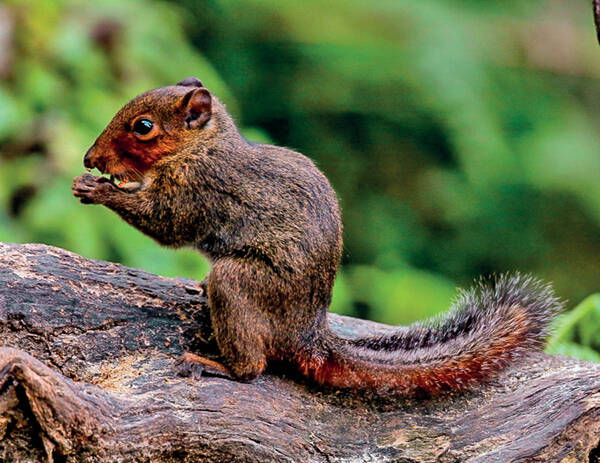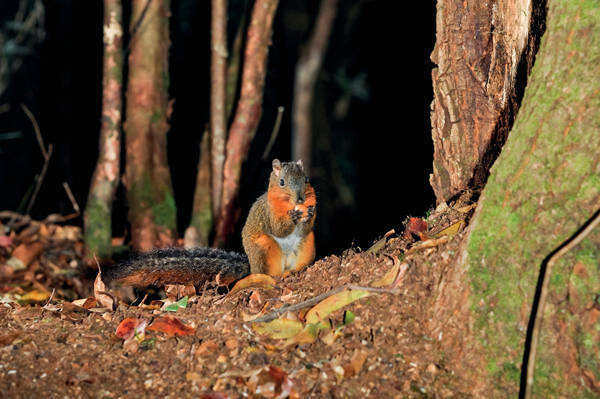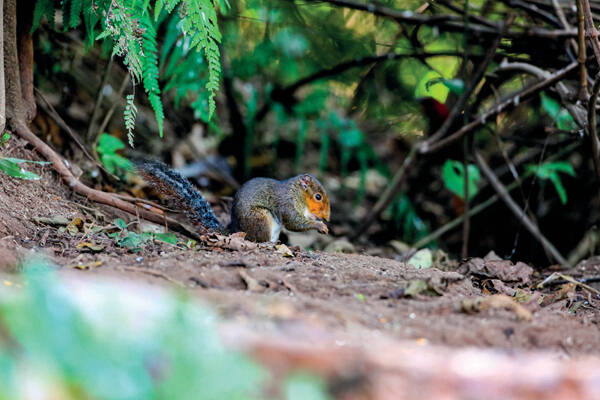Dremomys rufigenis
IUCN
LCBasic Information
Scientific classification
- name:Dremomys rufigenis
- Scientific Name:Dremomys rufigenis,,Asian Red-cheeked Squirre,l Red-cheeked squirrel, Red-cheeked long-nosed squirrel
- Outline:Rodents
- Family:Rodentia Sciuridae Sciurus
Vital signs
- length:Approx. 207 mm
- Weight:
- lifetime:
Feature
It has a large body and a short tail. The back of the body, including the forehead and upper legs, is dark olive green, and the abdomen is light yellowish white.
Distribution and Habitat
Distributed in Guangxi and Yunnan in China. Distributed abroad in the Malay Peninsula, Indochina Peninsula, India, etc.
It is a semi-arboreal and semi-terrestrial type, active frequently at dawn and dusk. It mainly lives in subtropical mixed forests and river valley bushes below 1000m above sea level, and builds nests in tree holes or rock crevices.
Appearance
The back, sides and outer sides of the limbs are olive brown. The cheeks are red. The ears are gray-black. The ventral side of the body and the inner sides of the limbs are dirty white. There is no brown-red patch on the outer side of the hind legs. The center of the ventral side of the tail is rusty red, and the back is black. There is no red in the throat. There are 3 pairs of nipples, 1 pair on the chest, and 2 pairs on the groin.
Details
The red-cheeked long-nosed squirrel (scientific name: Dremomys rufigenis) is an animal of the family Sciuridae and the genus Dremomys. It lives a semi-arboreal life, is good at climbing and jumping, and likes to live in groups. It is more active at dawn and dusk, mainly active in bushes and forest edges. It has a certain route when it moves, often looking for food in fallen trees and piles of weeds, and can also walk on steep cliffs.

Red-cheeked long-nosed squirrels mostly live in tree holes or rock crevices, using tree trunk rot holes and bird nests abandoned as mouse nests. They rarely build nests on trees, but also have nests under cliffs and eaves in mountainous rural areas. They are less active in winter. They are omnivorous, and their main food is various plant seeds, and they also eat berries, young shoots, insects, etc. They molt twice a year, and individuals that have begun to molt in summer can be seen in early and mid-May.

Red-cheeked long-nosed squirrels mate in late winter and early spring, with two cubs per litter. An individual found on May 5 in Suiyang, Guizhou, China, still had testicles in the lower position, indicating that they can still mate at this time.









